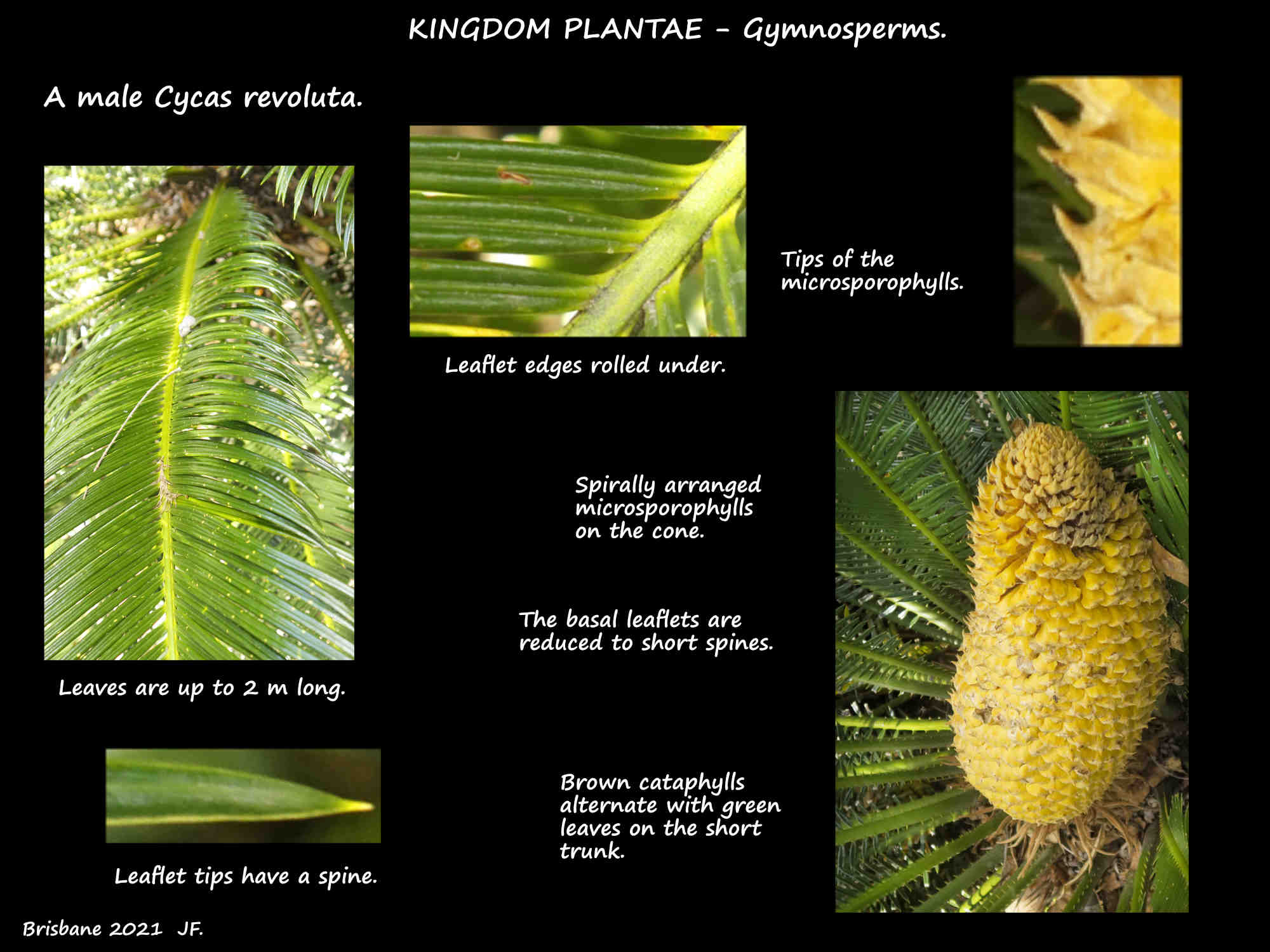Sago Palms – Cycadaceae.
The Cycas genus has 27 species endemic in Australia.
There are three cycads known as Sago Palms, the King, Queen and Prince.
King Sago Palm. Cycas revoluta.
In young plants the trunk may be subterranean with only the rosette of leaves visible.
Older plants have a shaggy trunk and may grow to over 6 m over many decades.
The trunk can have many suckers growing from the base and sides.
Deep green, once divided leaves up to 2 m long form a rosette at the top.
Leaf petioles are up to 10 cm long. The basal leaflets are spine-like.
Leaflets, with a spiny tip, are thin and stiff with the margins rolled under.
Females will only produce seed it there is a male plant nearby.
Female megasporophylls, forming a spherical mass on the crown, are feather-like and yellow to brown.
The 4-5 cm seeds on each megasporophyll are red to reddish-brown.
The upright, yellowish, ellipsoid male cone is up to 30 cm in length.
Queen Sago Palm.
Commonly known as Cycas circinalis, most may actually be C. rumphii. There is still a lot of confusion.
It is a “typical” cycad and many similar ones are identified as it.
The unbranched trunk is 3 to 5 m tall but sometimes more.
It has a rosette of bright green, semi-glossy pinnate leaves up to 2.5 m long, on the top.
Leaflets are arranged in opposite pairs and are on petioles up to 70 cm long.
Male plants develop an ovoid, white to yellow cone 30 to 40 cm tall at the top of the trunk.
There is a prominent apical spine on the microsporophylls.
Female plants have megasporophylls up to 30 cm long, covered with short brown hairs.
The lamina is lanceolate with an apical spine; the margin toothed with spines.
Each megasporophyll has 4 to 10 large yellow seeds.
Prince Sago palm.
Cycas taigungensis is similar to C. revoluta but with flatter leaves.
J.F.


